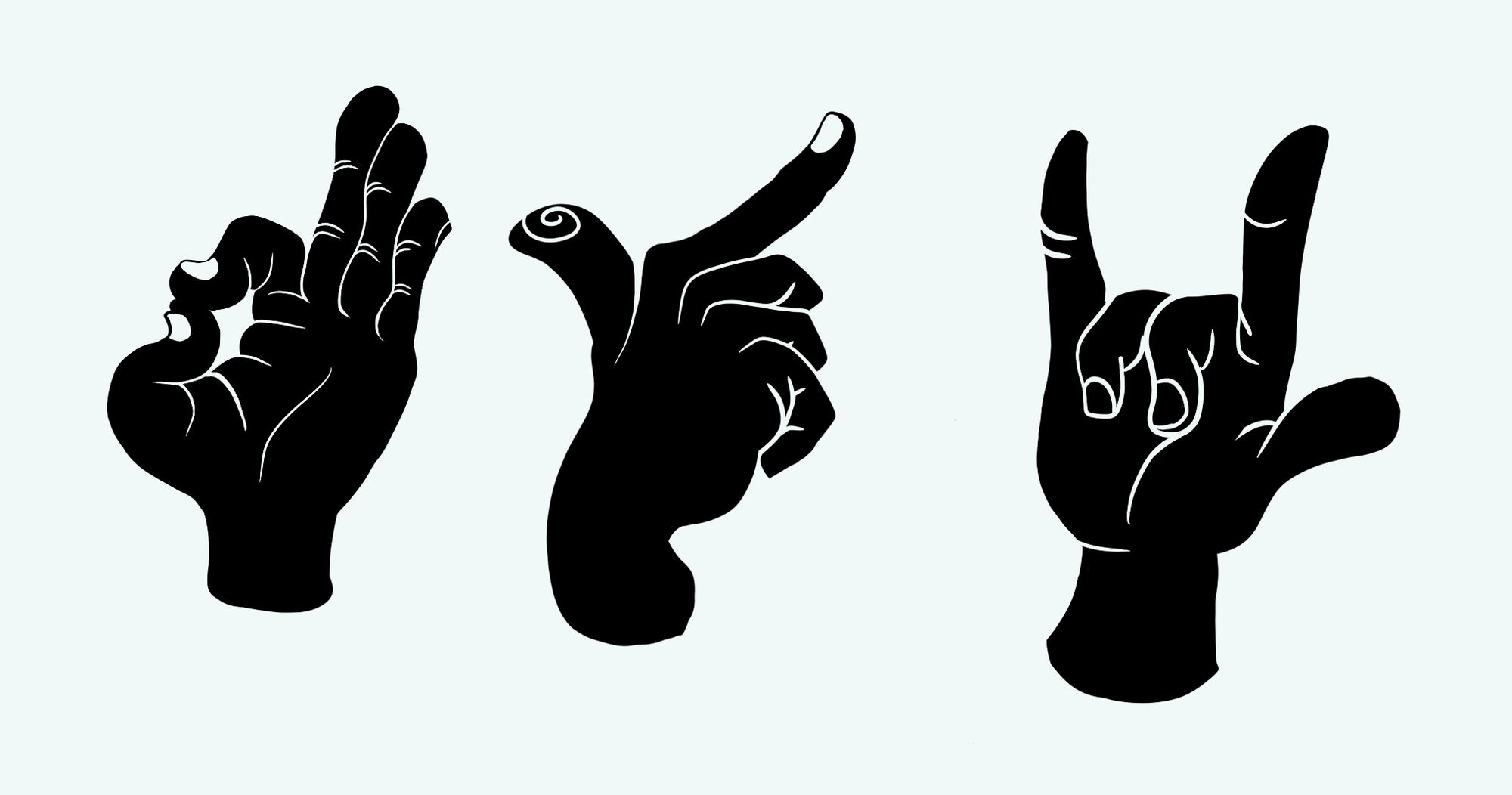Human hands are an expressive visual art form; a well-illustrated hand gesture can convey a powerful emotion equal to the human face. It is also one of the most familiar objects to the human eye.
Drawing human hands can be a challenging task; a hand is a combination of complex structures composed of many bones, muscles and tendons. Moreover, applying perspective into the varying volumes of fingers, palms, and wrists can be calculative like math.

Live Observation
References of hands can be easily found on the internet but the best is your own (0r anyone else willing to lend a hand).
The freedom to move your eyes around a real hand gives you many different perspectives, and the visual information you get from nature is incomparable to pictures. Observing someone else's hands (or any other body part) can sometimes challenge you since it could be very different from what your eyes are used to.
Frame Work to Details
Simplifying the whole structure is the key. The hand consists of bone called carpals. Do not worry about making it pretty – just get the foundation or the desired structure right first. Basic things to consider are the lengths of the knuckles for each fingers. The middle finger has the longest phalanges in general. The projecting angles of each fingers are different, and they form an opening-fan like arc when spread apart.
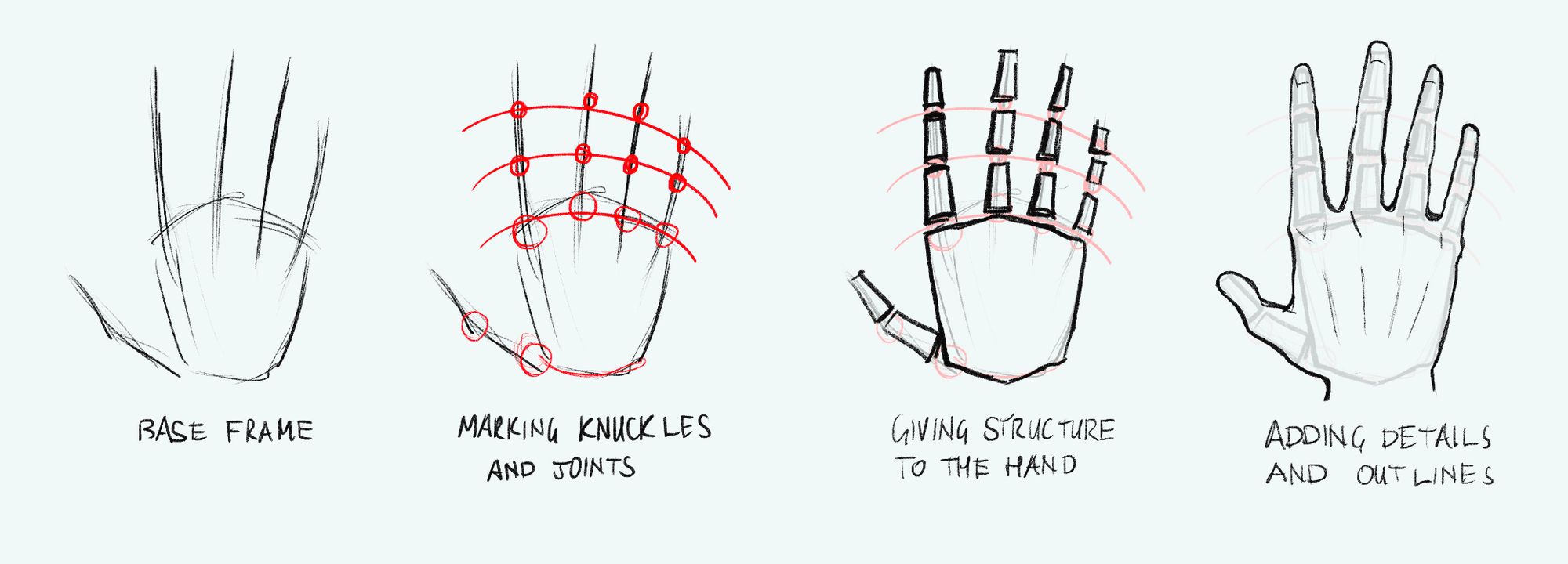
If you are using apps like Procreate or Photoshop, adding a layer on top of the initial sketches (with reduced opacity) can be helpful. If you are drawing it on paper, materials such as tracing paper (translucent papers) can be used to trace outlines and details on the armatures/frames.
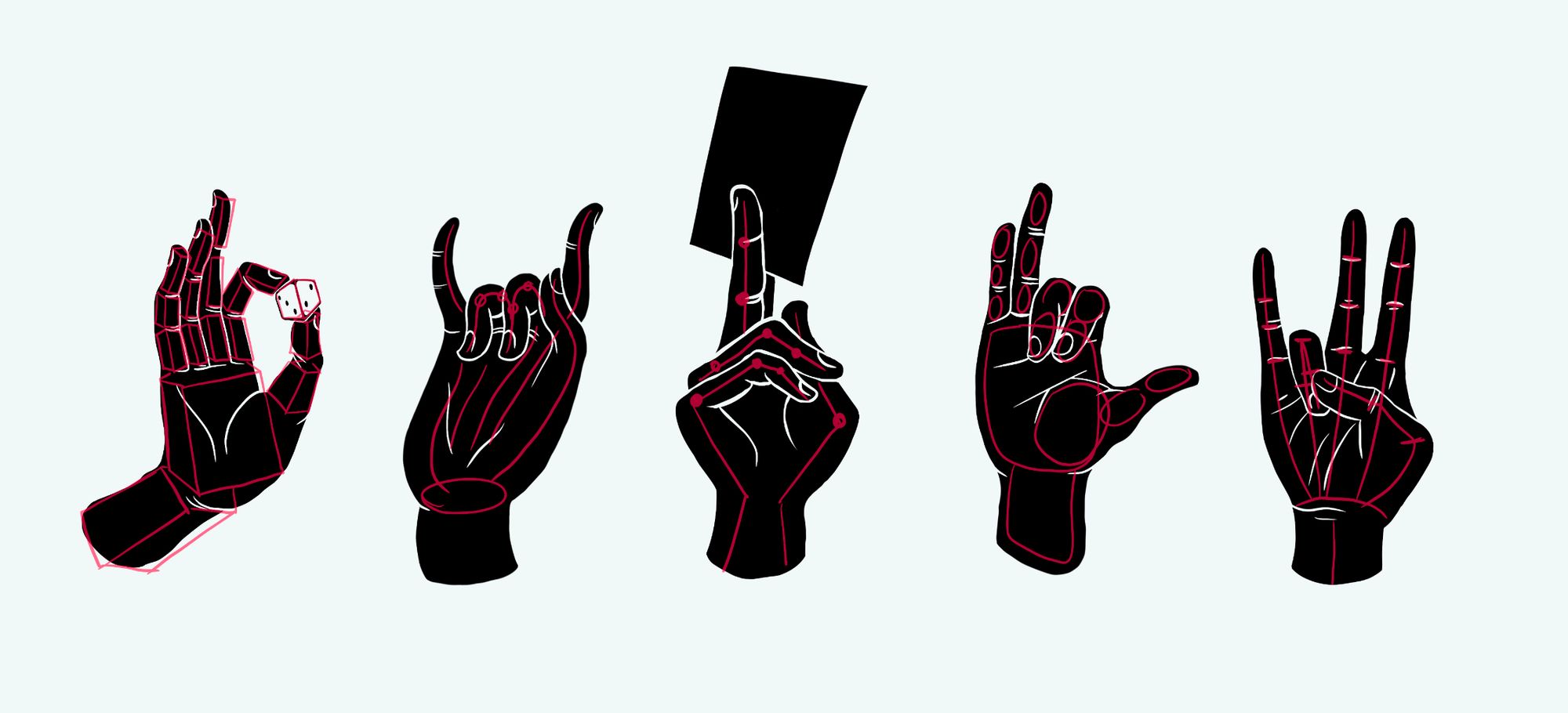
Drawing in Perspective
When the hand gesture you have selected is at an irregular angle, it is always helpful to think in 3 dimensional blocks/cuboids or even cylinders. This will help in creating depth or perspective while adding details like highlights, shadows and mid-tones. Before you even start with the details, the drawing will already give the impression of a realistic hand.
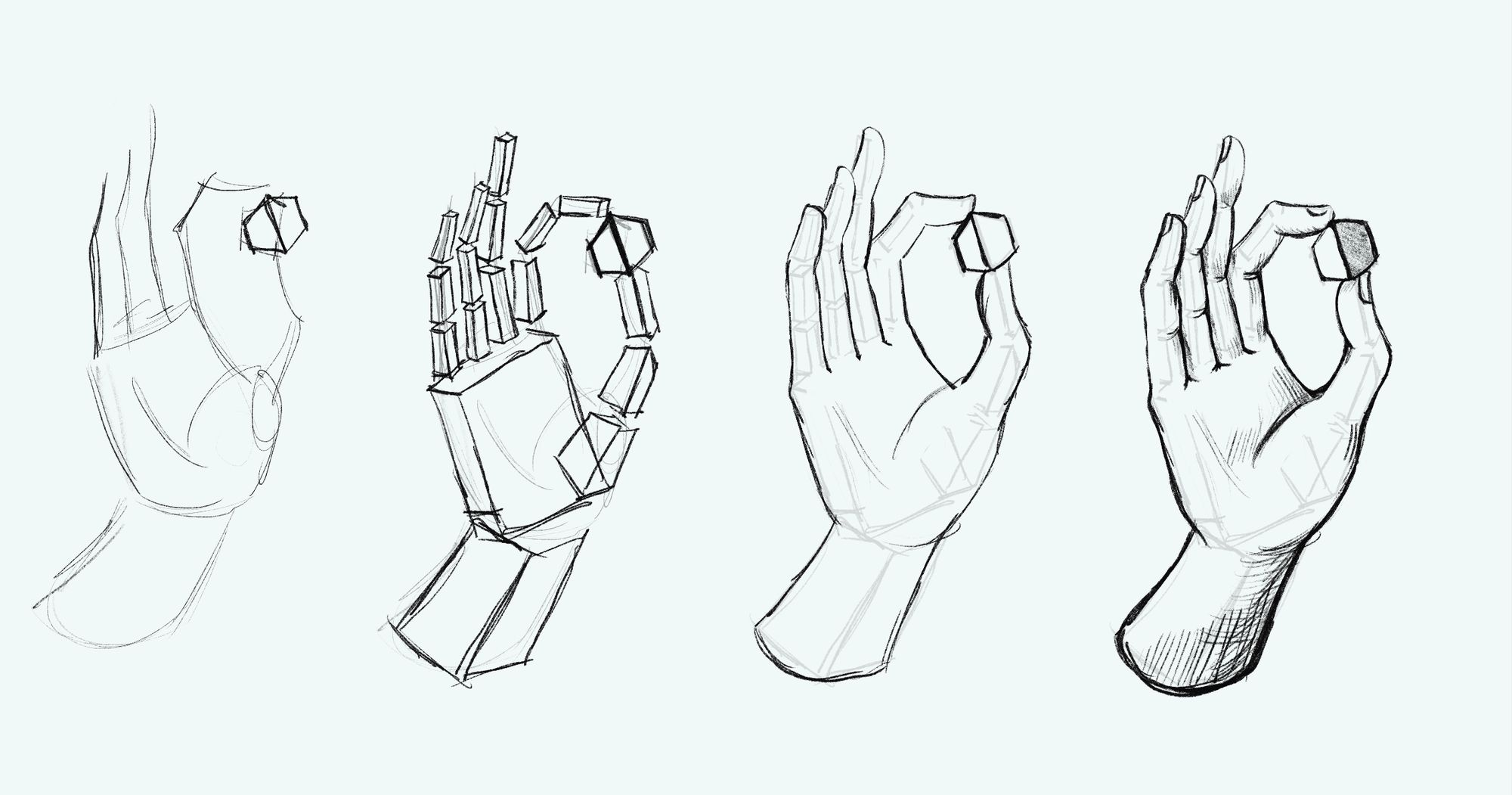
Drawing in Silhouettes
Silhouettes or flat pictures can be challenging since it hides the details of the images; thus, getting the outlines and subtle details of the hand into the picture becomes crucial. Similar to drawing a realistic looking hand, we always have to consider the frame drawing to capture accurate forms.
Thickness of the negative space (white lines) will play a big role in showing the strength of light on the surface. More negative space means stronger light presence in the case of silhouette drawings.
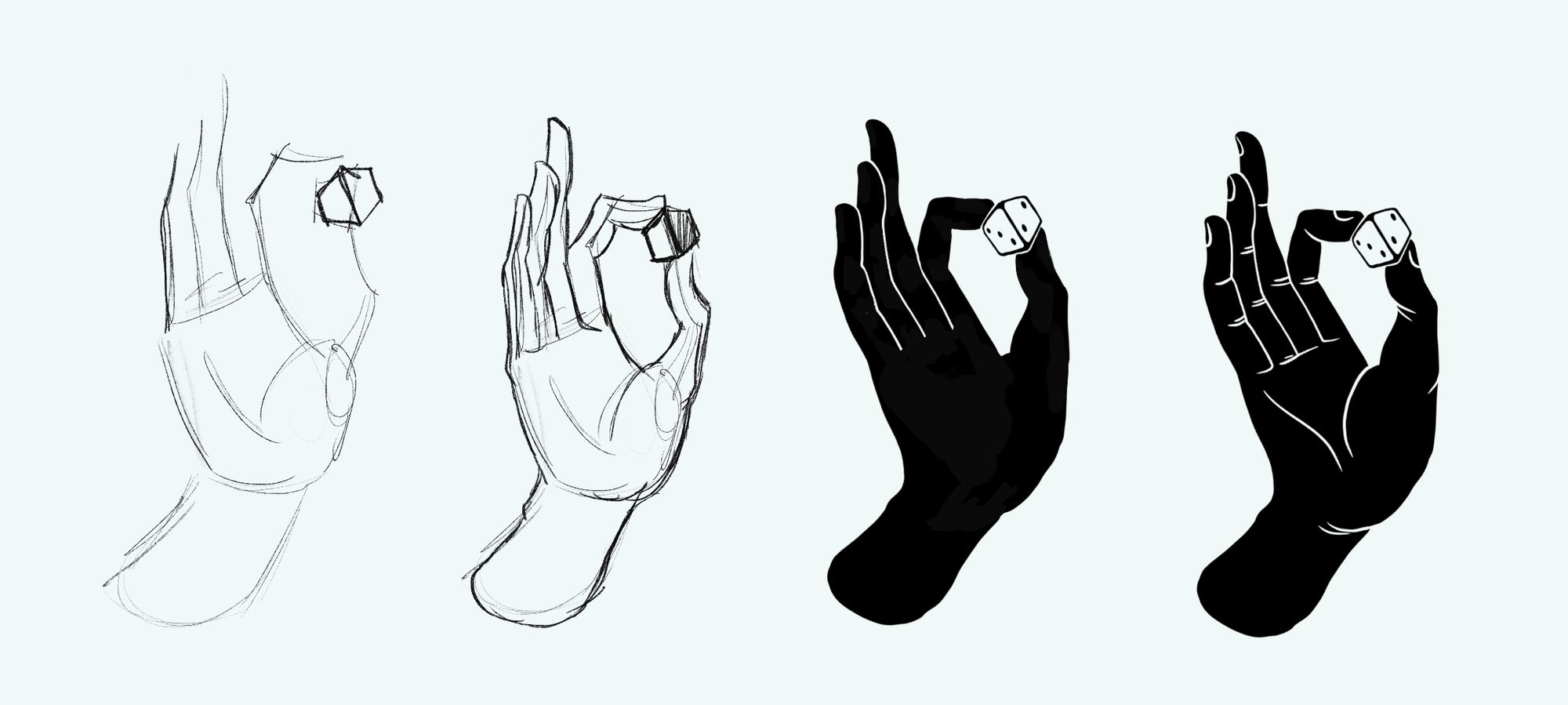
Filling out color in Procreate or Photoshop is easier in this case compared to manual drawing, but the foundation is always the same: Practice quick gesture drawings (that looks like wires). Additional details of nails and wrinkles must be sensible and efficient; the negative spaces must convey the hand structure's layers (front to back) and volume.
Once you have mastered the basis of hand drawing and gestures, stylizing becomes much easier. By distorting proportions and shapes, hand illustrations can become a powerful element to convey emotions and different messages.
